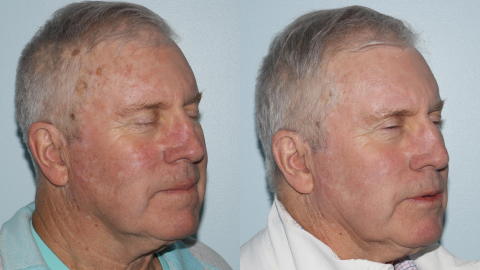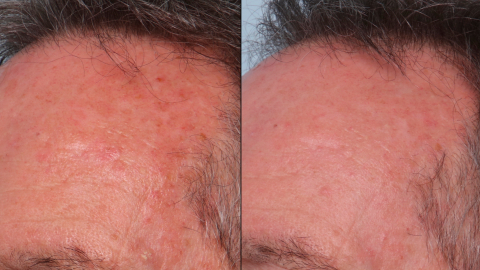Actinic Keratosis
What is actinic keratosis?
Referred to as “AKs” in the medical field, actinic keratoses are a form of sun damage that presents as scaly patches on the skin with the texture of sandpaper. Often patients describe the area being scaly for a moment, that scale shedding, and the cycle starting over again. Actinic keratosis is not skin cancer – but it wants to be. Actinic keratosis is thought to be a precursor to squamous cell carcinoma, the second most common skin cancer. Thankfully, this occurs very slowly over years, giving us time to intervene – however it may occur faster in individuals who have a history of skin cancer or other health conditions, such as being the recipients of an organ transplant.
What treatments are available for this condition?
Commonly used medical dermatology treatments for actinic keratosis include liquid nitrogen and prescription creams. Devices borrowed from our cosmetic practice can also reduce the number of actinic keratoses.
Laser resurfacing is the treatment modality we use the most in our practice to treat actinic keratosis. This treatment delivers infrared energy to the top layer of the skin to create a controlled injury and use our body’s healing mechanisms to return skin to a healthy structure. More and more scientific literature supports the use of this treatment not only to clear actinic keratosis, but also to reduce the odds of developing skin cancer in the future (https://pubmed.ncbi.nlm.nih.gov/36728065/)
Another option is photodynamic therapy, a treatment that uses a topical medication that sensitizes the skin, followed by activation with red LED lights. During your consultation, ask us what treatment is best suited for you.



